Ric Doedens plunges his Alde-equipped Cirrus 820 far below freezing and shares his experience and winter-defeating modifications in the process. Grab a hot cocoa and a blanket. This one’s chilly.
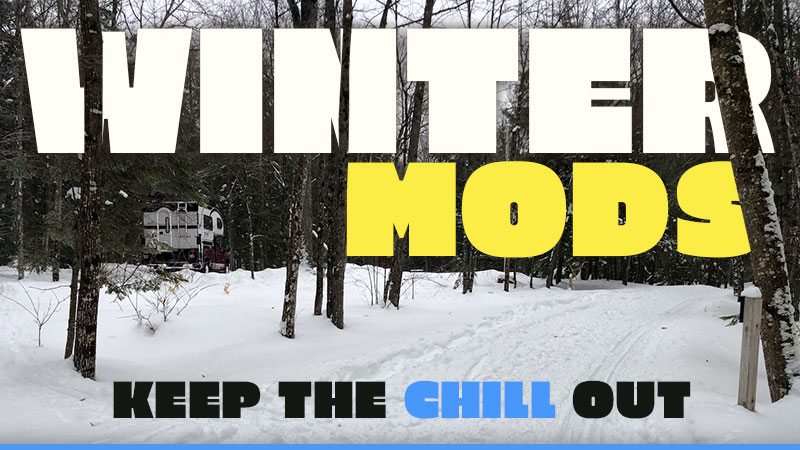
If we were designing a custom truck camper from the ground up, it would most likely include an Aide hydronic heating system. After spending seven months in a Cirrus 920 in 2018 and into 2019, the Alde completely won us both over.
The Alde system silently heated the camper so well that we simply forgot what temperature it was outside. We would open the rear door in the morning and say, “Oh wow, it’s cold outside.” That probably sounds like hyperbole, but I can honestly say the Alde 3010 in that Cirrus 920 was a better heating system than any house we had ever lived in. Doubt my claim? Read our review.
Ric Doedens is taking his Alde-equipped Cirrus 820 into winter temperatures far beyond anything we dared test four years ago. With some cold-defeating mods, Ric has plunged his Cirrus into -28 degrees Celsius (-18.4 degrees Fahrenheit) and evidently survived to write about it. And from what he’s written, he camps in extremely frigid temperatures on purpose and would trade our fair-weather summer camping any day for a provincial winter wonderland. Just thinking about it; brrr!
The following article is for all you winter campers out there. Ric shares his winter experience with the Cirrus, and some tips on how to significantly improve its already impressive winter performance. Want to camp in the cold? Keep reading.
by Ric Doedens
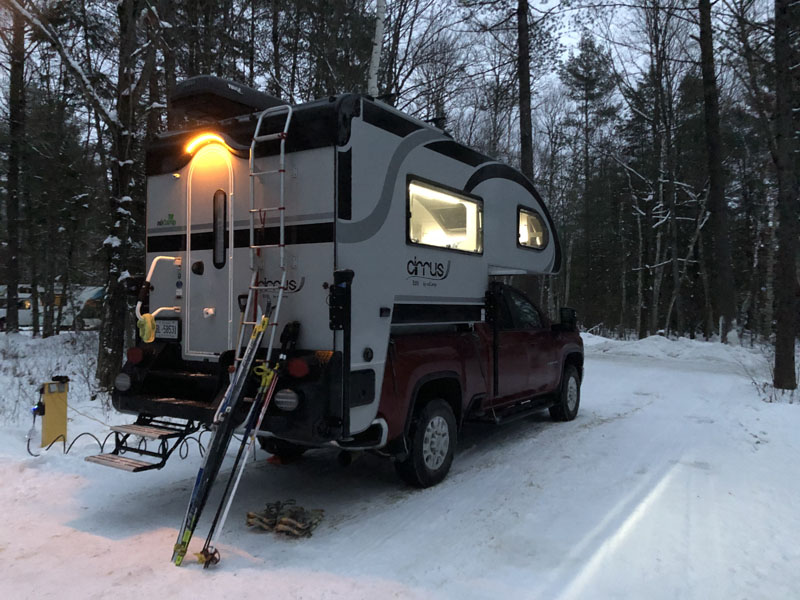
Above: Arrowhead Provincial Park, Ontario, Canada
From our home base in Toronto, there are three provincial parks with cross-country ski trails within a three-hour drive; the Pinery to the west, Arrowhead to the north, and Silent Lake to the east. Algonquin also has winter sites and ski trails but it’s another half-hour drive. You also need to leave the campsite at Algonquin and drive 20 minutes to get to the ski trails, so it’s a bit less convenient than the other three parks.
Last year was our first year with our camper and our first year of winter camping. We would check the ski conditions for each of the three parks and pick the one with the best conditions. All three parks have electrical hookups, which we need since the campsites have tree canopies that limit the use of solar panels.
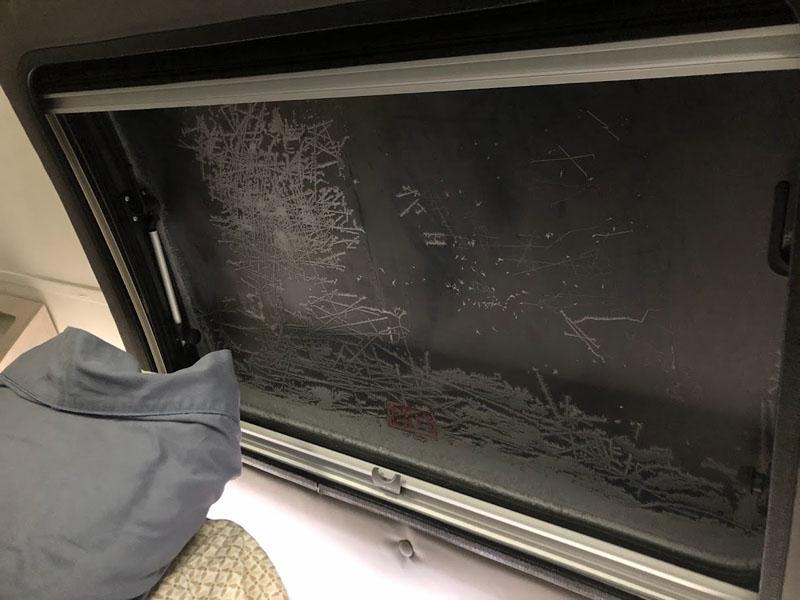
Above: -27 Celsius outside and +21 Celsius inside
In the coldest temperatures, the Alde heater in our Cirrus 820 needs both propane and 120-volt electricity to keep the cabin and plumbing sufficiently warm. The lowest temperature we ever camped in was -28 degrees Celsius (-18.4 degrees Fahrenheit) in Arrowhead Provincial Park in Ontario.
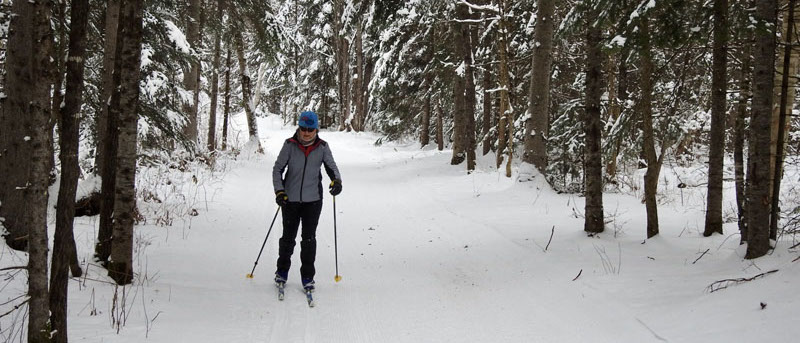
With our warm and cozy camper as our home base, we spend our days hiking, snow-shoeing, cross-country skiing, and on rare occasions, ice skating.
Like most private campgrounds, the majority of provincial parks close for the winter. Arrowhead is one of the noted exceptions. Electricity is provided at each of the sites which are plowed for easy access.
You must bring your own water and arrange to dump your tanks elsewhere. There is a central comfort station that includes washrooms, shower stalls, and laundry facilities where you can fill water jugs.
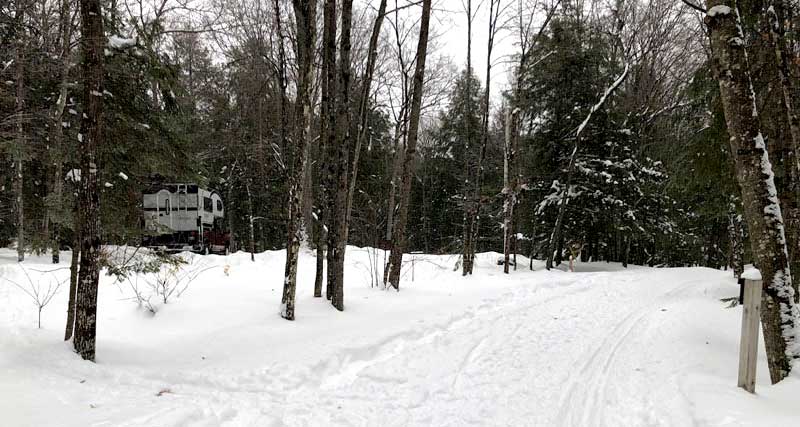
Above: Ski trails right at the campsite’s door step
Arrowhead also provides groomed cross-country trails and a unique skating trail that takes you through the forest in a one-mile (approximately) circle loop.
On one particular trip, we availed ourselves of all the amenities. We enjoyed skiing and snowshoeing but, ironically since that was one of our main reasons for going, the skating didn’t turn out so well.
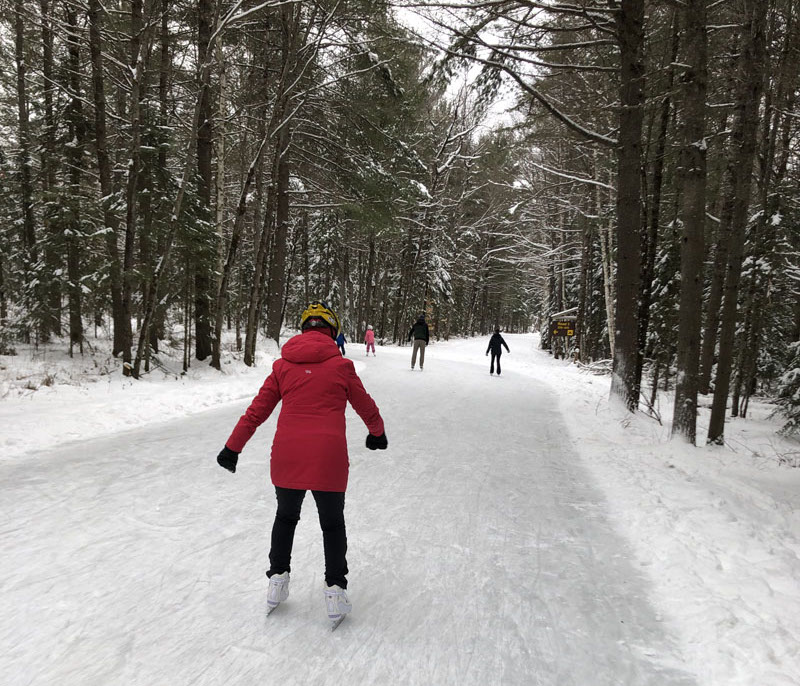
Between a very rough ice surface (where’s the Zamboni?) and this being my wife’s first time on skates in 30 plus years, we barely completed a single lap around the trail before a hard fall put an end to that particular activity. In all, we stayed for three nights and thoroughly enjoyed our time there.
Winter is the best season to enjoy the outdoors. You can dress for the cold; you can’t dress for the heat. There are no bugs, no humidity, no noise, and no comparison. Winter rocks!
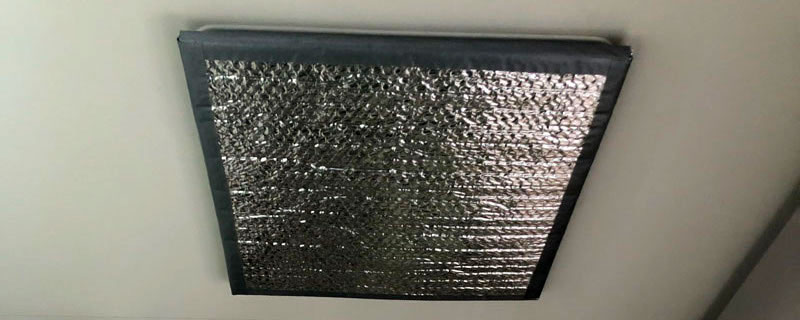
Our Cirrus 820 is four-season capable, especially after some simple winter mods. Inside the cabin, I added insulated covers to the ceiling fan, pass-through window, and door window, which are all single-pane.
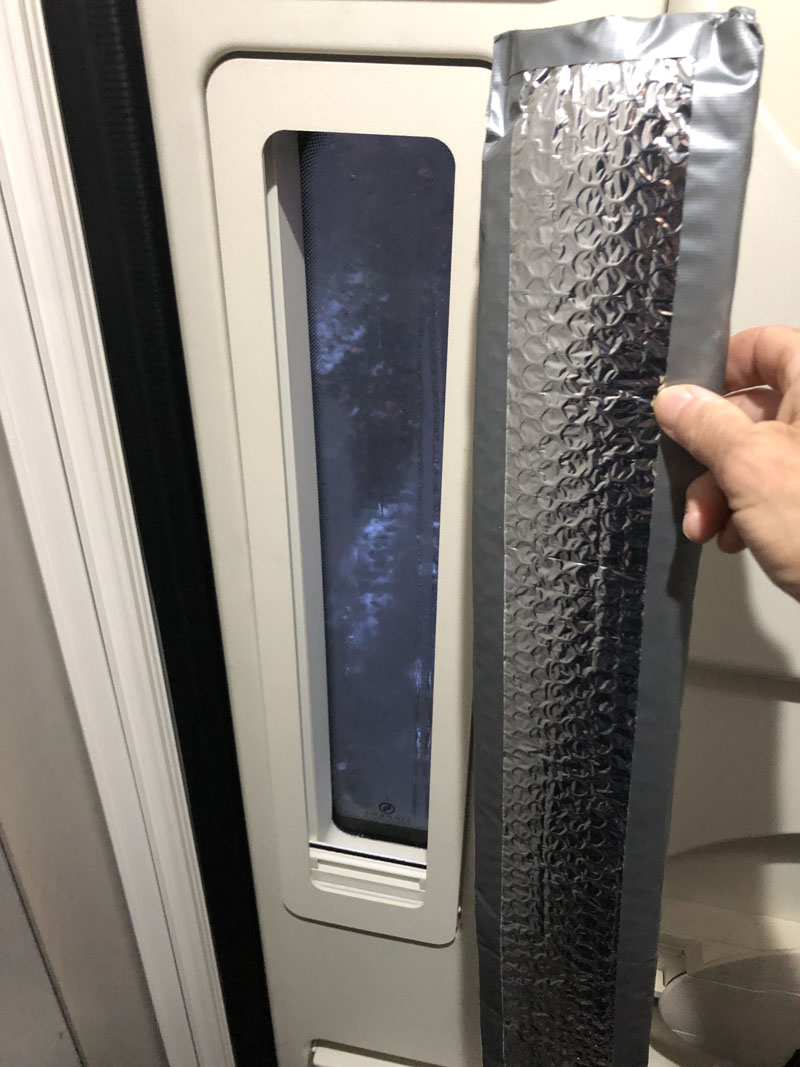
The entry door required additional gaskets at the door hinges and along the bottom of the door. The main windows are double-pane. Even in the coldest weather, there is very little condensation build-up.
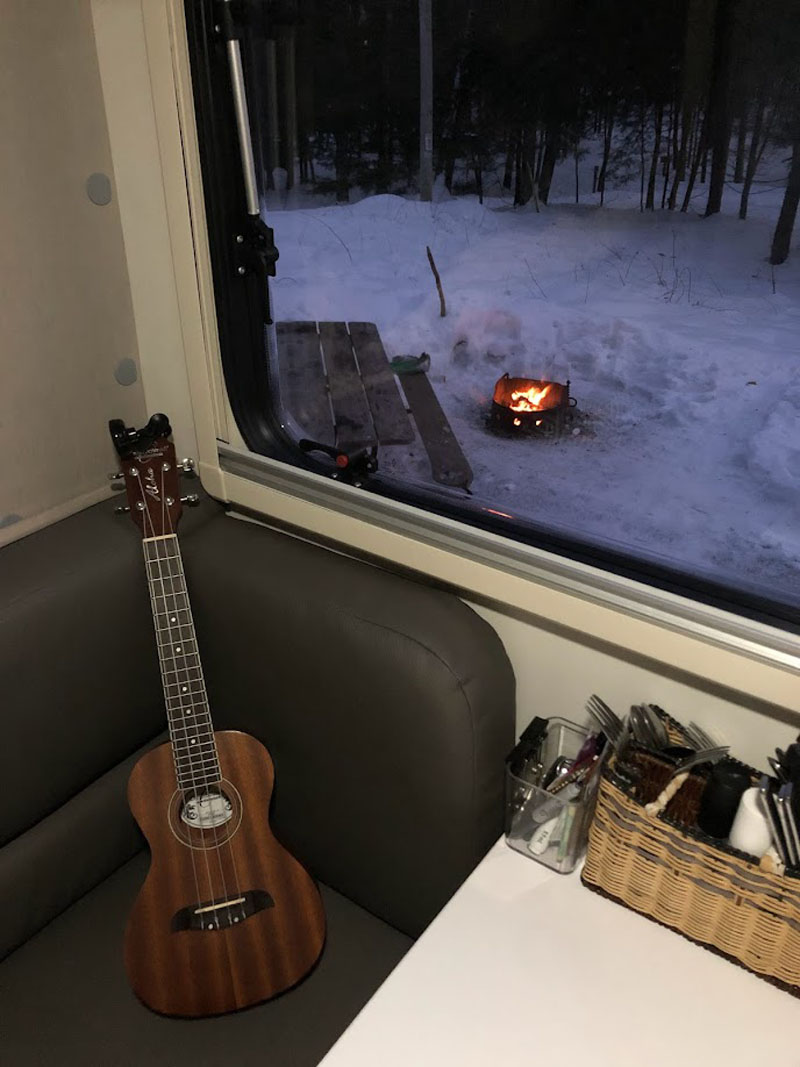
Above: Comfy cozy at Silent Lake Provincial Park, Ontario
We saw other RVs in the campground where you simply could not see out of the windows due to the frost build up.
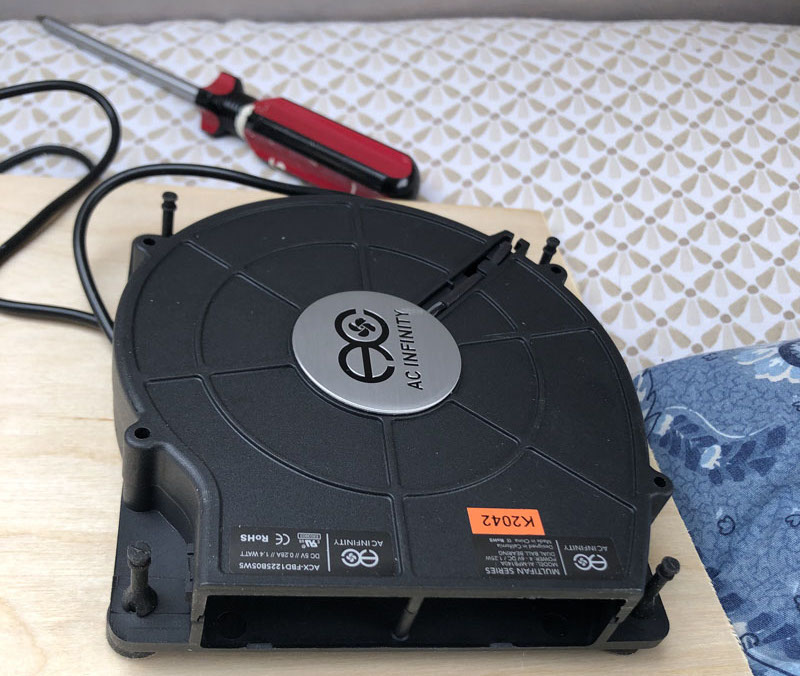
Above: Computer fan used for under bed air circulation
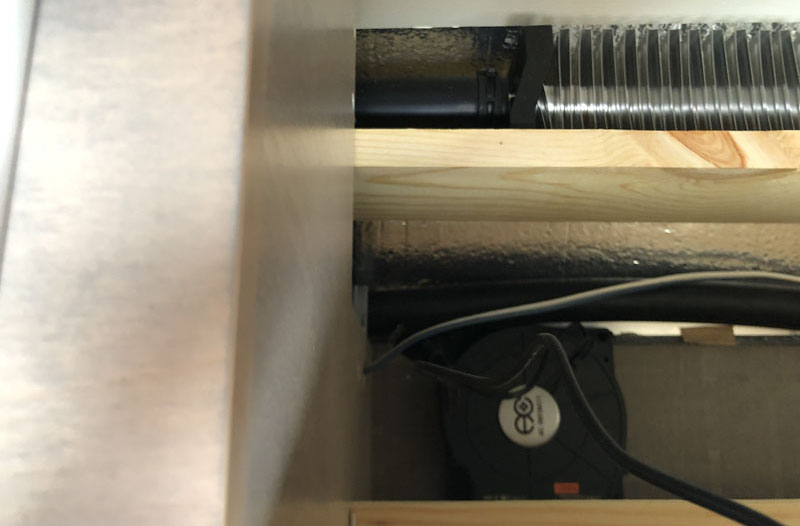
Above: Installed fan showing Alde radiator
The bed has the Froli system which keeps the mattress raised and allows air circulation underneath. We have supplemented the circulation by adding low-profile horizontal computer fans to direct additional airflow under the mattress. That all works well.
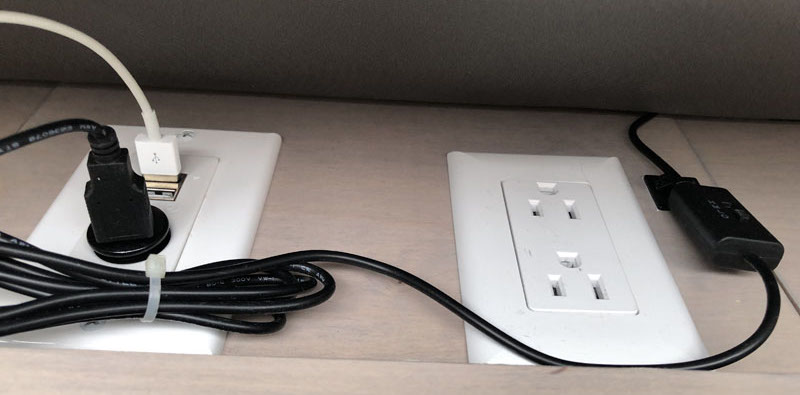
Above: USB control for underbed fan
Our truck has a block heater which we plug in at the power station at our campsite.
The Alde heater does a great job of heating the cabin and the basement which includes the plumbing and tanks. That said, the basement was not well sealed from the factory. During our first winter, the Alde had to work overtime to combat the numerous leaks that allowed cold air to enter.
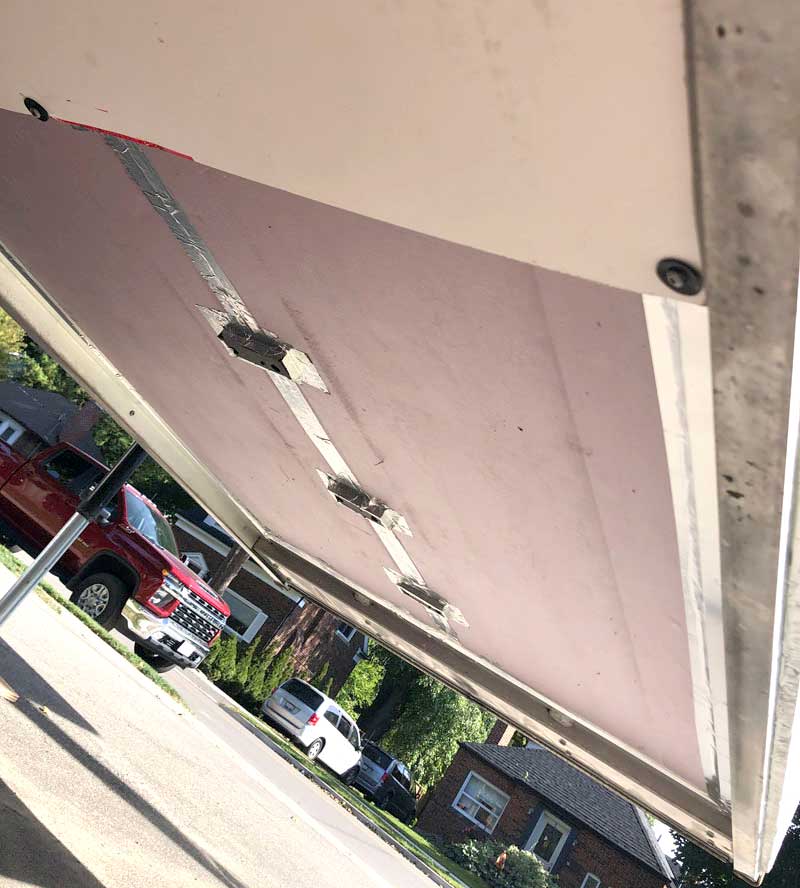
This year, I removed the bottom panels, added rigid insulation, and sealed all openings. I also added rigid insulation around the outside of the basement. Combined, I am certain this will reduce the amount of energy needed to keep the basement from freezing.
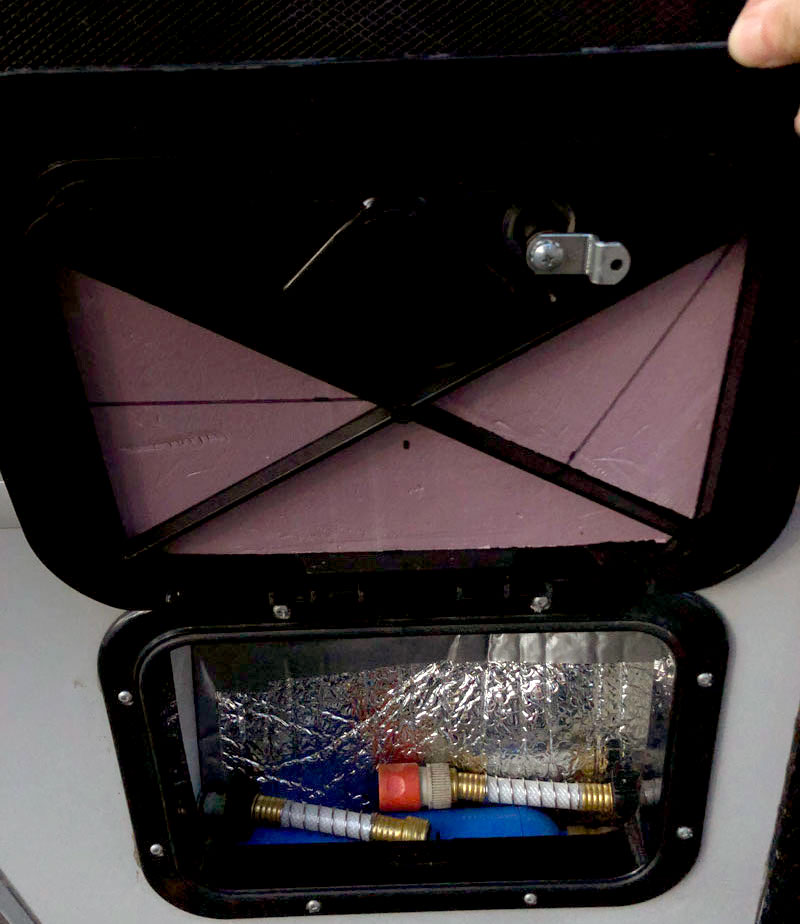
Above: Insulation added to Nautilus locker
While at nuCamp for some warranty work last spring, I had the factory add two thermostats to the Alde system; one for the outside and another for the basement. The two thermostats allow me to monitor the temperatures separately from the cabin. As a result of my basement and insulation additions, the basement is now warmer than the cabin. We do not hesitate to use all plumbing systems in the winter, including the shower.
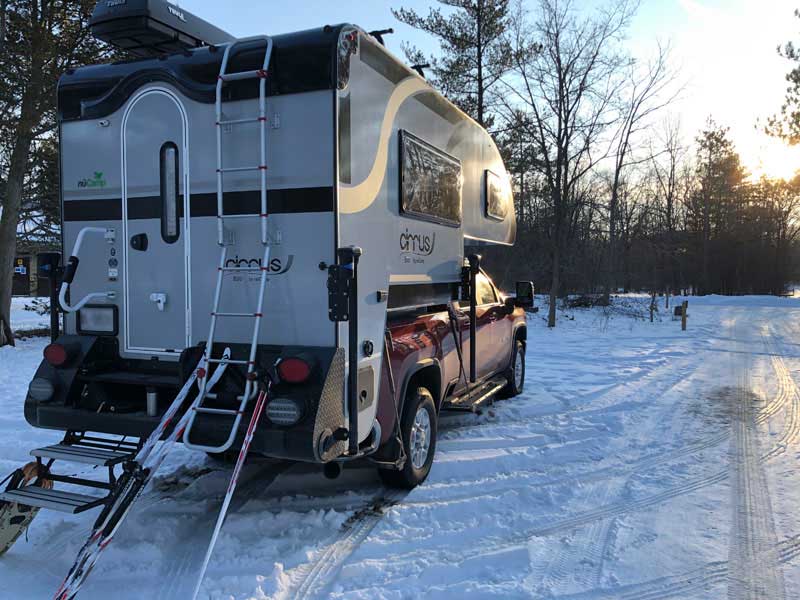
Above: Pinery Provincial Park, Ontario
We set the camper thermostat to 21 degrees Celsius (70 degrees Fahrenheit). We are as comfortable in the camper as we are at home. To be fair, on the night when the temps dropped to -28 degrees Celsius (-18.4 degrees Fahrenheit), since there was no insulation at any of the frame locations, frost was building up at the locations where the aluminum frames created a thermal bridge. Nevertheless, the inside air temperatures remained comfy.
This year we added foil insulation behind the dinette cushions that are attached to the outer walls. The idea behind the addition was to mitigate frost build between the cushions and the wall. Unfortunately, that experiment failed and our next plan will be to add the airflow material behind the cushions.
Tip number one is to get a four-season camper. Tip number two is to understand that there are actually five seasons; warm, hot, cool, cold, and frigging cold.
Take the time to add insulation and seal all openings where cold air can penetrate the enclosure. This will ensure that you can comfortably enjoy “season five”.
Most dump stations are closed in the winter so have a plan in place. More specifically, know where there are open dump stations available. Our limited options are either a local municipal dump station or we continue home where I use a portable waste tank. We dump the portable waste tank into the sewage drain pipe on our property.
We use iOverlander whenever we travel. It served us very well on our trip through Newfoundland and Labrador this past summer.
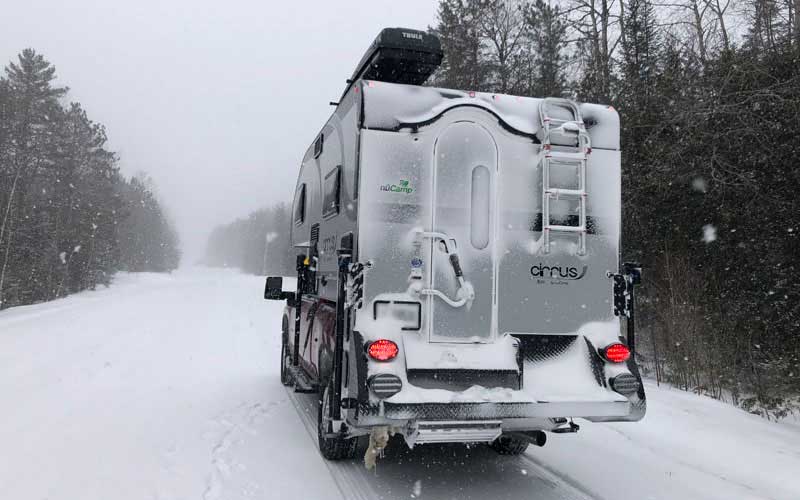
Above: Heading home from Silent Lake
One of my favorite pastimes on days when no new snow is forecast is to head off-trail for a snowshoe in the forest in no particular direction. To find my way back, I can simply turn around and follow my own tracks to our campsite. To attempt this in the summer would find me hopelessly lost; sweating, uncomfortable, and tormented by biting insects.
Winter is so much better. The parks are near-empty in comparison to the summer season. It’s so peaceful. It’s the best.
